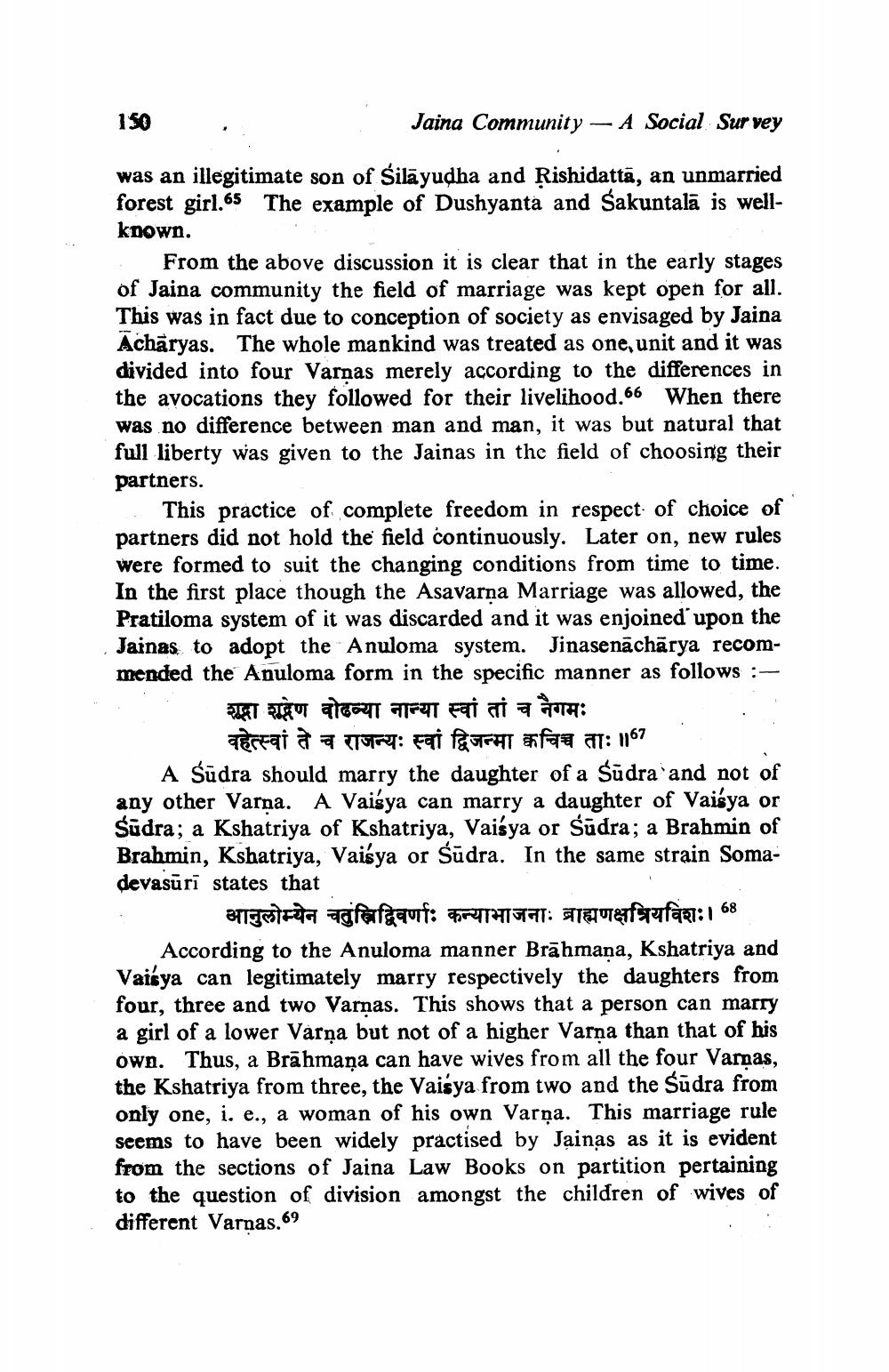________________
Jaina Community -A Social Survey
was an illegitimate son of Silayudha and Rishidatta, an unmarried forest girl.65 The example of Dushyanta and Sakuntala is well
known.
150
From the above discussion it is clear that in the early stages of Jaina community the field of marriage was kept open for all. This was in fact due to conception of society as envisaged by Jaina Acharyas. The whole mankind was treated as one, unit and it was divided into four Varnas merely according to the differences in the avocations they followed for their livelihood.66 When there was no difference between man and man, it was but natural that full liberty was given to the Jainas in the field of choosing their partners.
This practice of complete freedom in respect of choice of partners did not hold the field continuously. Later on, new rules were formed to suit the changing conditions from time to time. In the first place though the Asavarna Marriage was allowed, the Pratiloma system of it was discarded and it was enjoined upon the Jainas to adopt the Anuloma system. Jinasenacharya recommended the Anuloma form in the specific manner as follows :शूद्रा शूद्रेण वोढव्या नान्या स्वां तां च नैगमः
वहेत्स्वां ते न्व राजन्यः स्वां द्विजन्मा कचिच्च ताः ॥ 67
A Sudra should marry the daughter of a Sudra and not of any other Varna. A Vaiśya can marry a daughter of Vaisya or Sudra; a Kshatriya of Kshatriya, Vaisya or Sudra; a Brahmin of Brahmin, Kshatriya, Vaisya or Sudra. In the same strain Somadevasuri states that
आनुलोम्येन चतुस्त्रिद्विवर्णाः कन्याभाजनाः ब्राह्मणक्षत्रियविशः । 68
According to the Anuloma manner Brāhmaṇa, Kshatriya and Vaisya can legitimately marry respectively the daughters from four, three and two Varņas. This shows that a person can marry a girl of a lower Varna but not of a higher Varṇa than that of his own. Thus, a Brahmaṇa can have wives from all the four Varnas, the Kshatriya from three, the Vaisya from two and the Sudra from only one, i. e., a woman of his own Varna. This marriage rule seems to have been widely practised by Jainas as it is evident from the sections of Jaina Law Books on partition pertaining to the question of division amongst the children of wives of different Varnas.69




